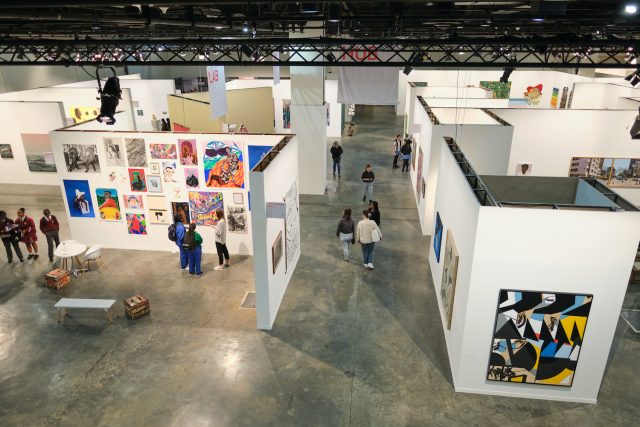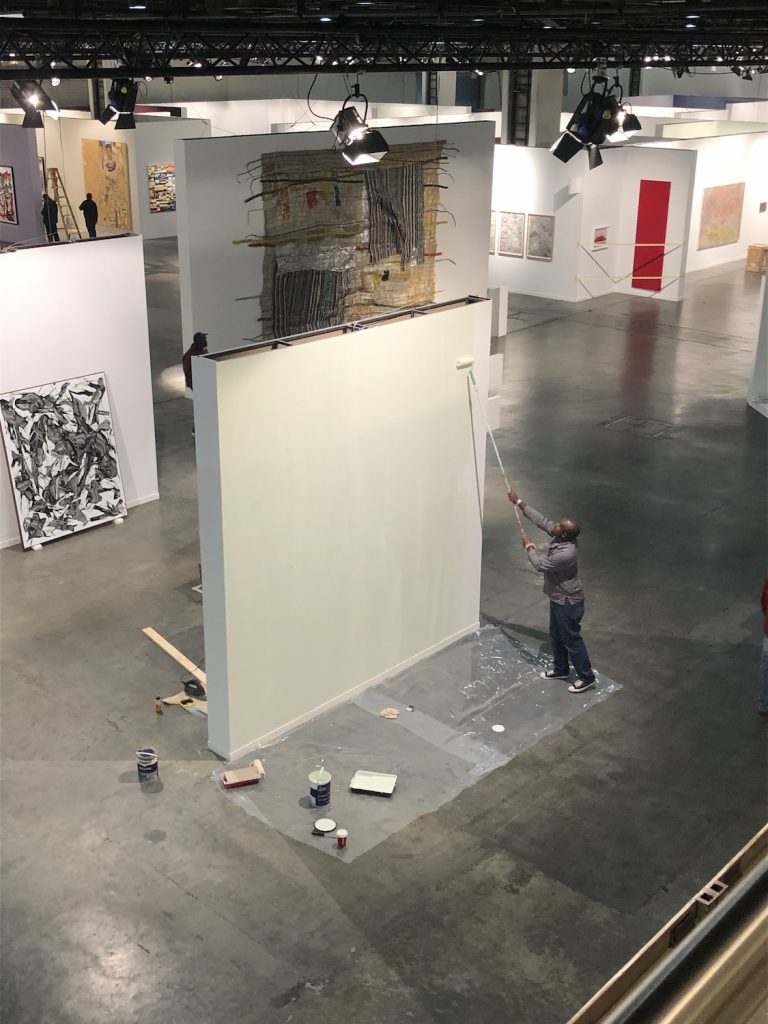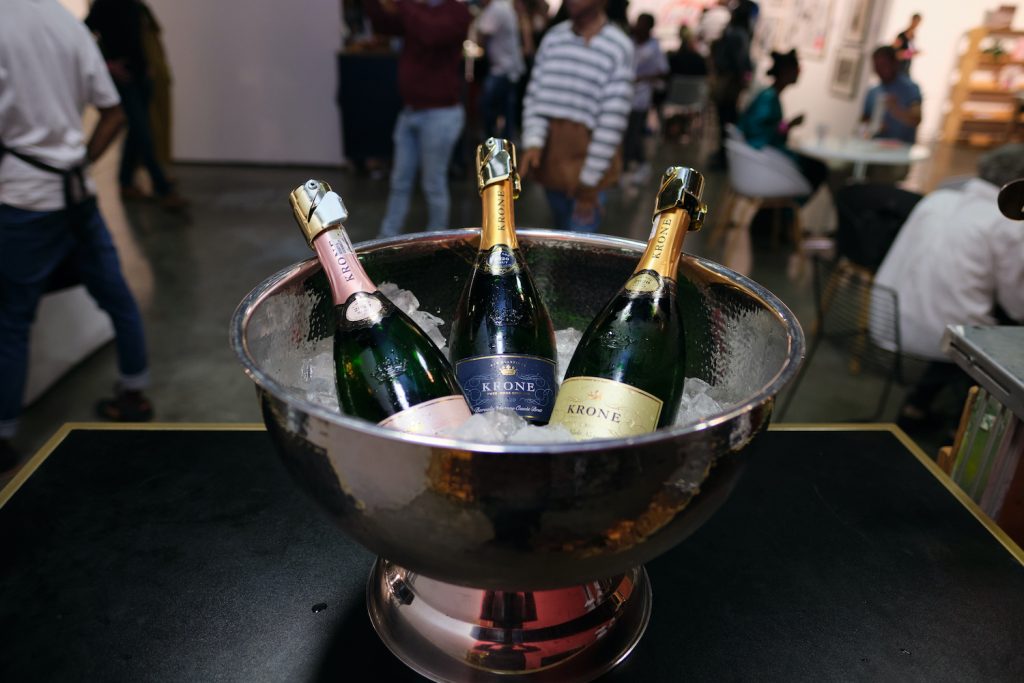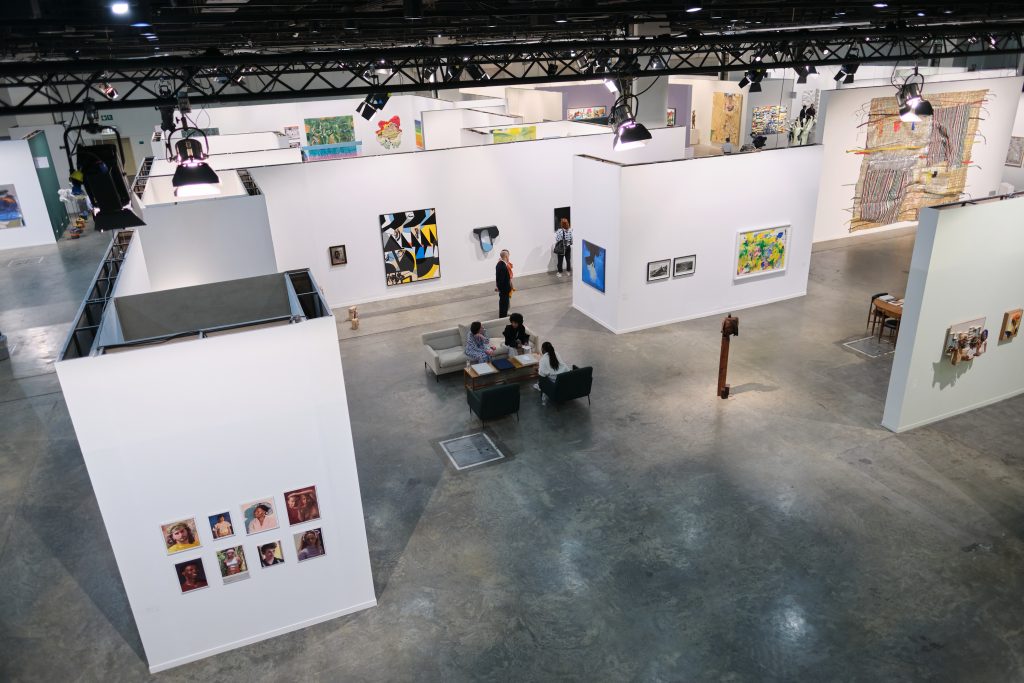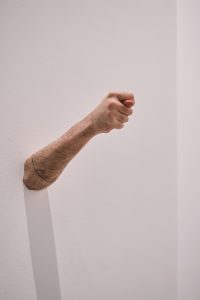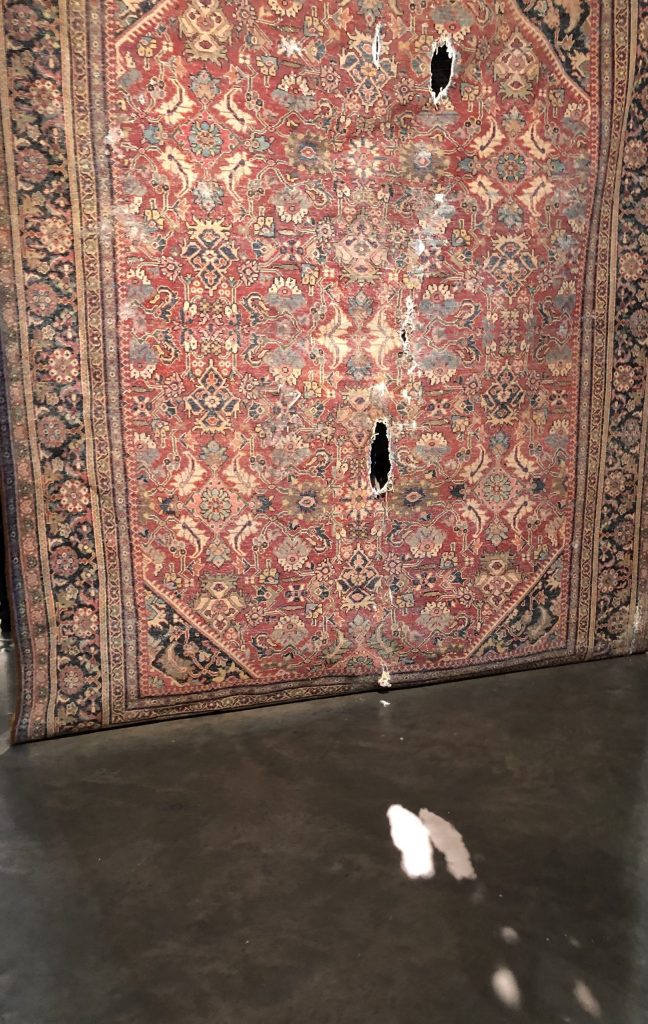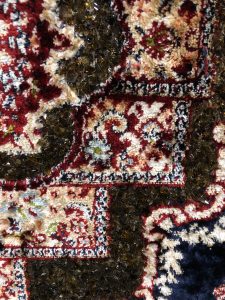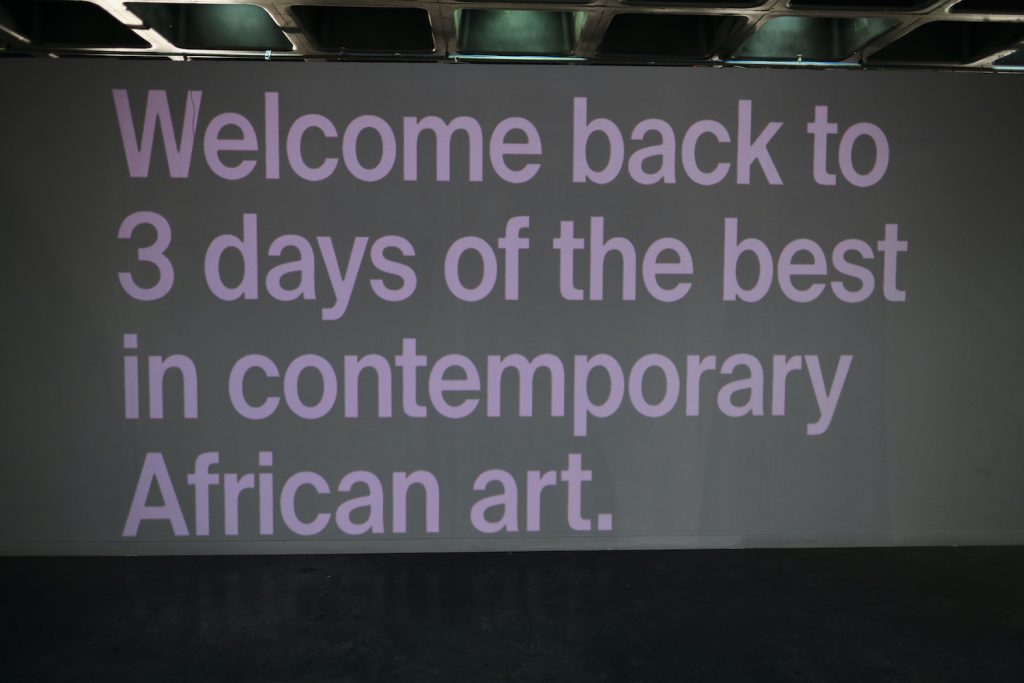FNB Art Joburg
01.09 - 04.09.2022
It begins in the large, empty basement of Sandton City Convention Centre, the centrepiece of Sandton, a city of shopping centres. This place makes money by offering their tenants as generic a space as possible – a tabula rasa for any number of programmes. The tenant in this case is Mandla Sibeko, founder and managing director of FNB Art Joburg. His sub-letters are the galleries. They are a combination of South Africa’s top galleries as well as those from Kampala, Harare, Accra, Lusaka, Lagos, Gaborone. Each of us has been allotted a certain amount of square meterage. The largest, most central areas cost hundreds of thousands. The smaller, marginal spaces are for those who can only pay in favours – like the media coverage ArtThrob offers in exchange for booth space.
Later, we will convene in the convention centre for the twelfth time in fifteen years – namely, the first time since 2019. For now, there is the sound of power tools as walls are screwed, crates unpacked, bubble wrap ripped and spotlights angled. I am reminded of the tech rehearsals I endured when I acted in plays as a kid: the scramble to remember one’s lines amidst a sudden onslaught of new light cues, prop handovers, costume changeovers, and blasts of music from the pit. It excited and terrified me then as it excites and terrifies me now. To play my role, I must put on my smile and sell some art.
Over the opening’s twelve-hour day, I start to think about this smile. It is a smile that I learned when I worked for a brief time in galleries. It is a smile that says, “I am the caretaker of beautiful and important works of art, and you – yes, you – ought to buy them from me!” It is a smile I am happy to wear for the weekend – although, after a while my cheeks ache – but I have mad respect for the gallery workers who pull it off day in and day out. It is such an odd business, selling art. It must be the most lucrative role in our ecosystem and, at the same time, the least fun. It is a life of emails and invoices, shipments and storage, tending to the fundamentally opposed demands of clients and artists. It is the art of perfecting one’s smile so as to appear the smoothest out of all the cast members in our funny little play in the basement of the convention centre.
Tonight, our audience is a combination of artists, collectors, and what are varyingly called ‘scenesters,’ ‘art lovers,’ or ‘appreciators of the arts.’ I don’t know if it’s excitement or tension between this triangulation that compels them to drink, but the bottles of Krone are popping, the champagne is flowing freely. Phone snaps are aplenty, especially among the influencer crowd. The dress is informal, but designer. The sales are many but not outrageous. The conversation is light. There is very little talk of subject matter or formal arrangement; there is no talk of history. Primarily the talk is focused on where we’re going after this.
Where we’re going after this is a party at Saint, sponsored by FNB. There’s free food, free bar, and a live performance by Bongeziwe Mabandla. I’m reminded of the aphorism, it’s cheap to be rich, expensive to be poor. Looking at the hundred-some-odd artists, gallerists and collectors, swaying on their feet, nibbling risotto and ordering one round after another, I don’t know whether to laugh or to cry. Just hours ago, my neighbouring stallmate (André Sales of Clarke’s Books) and I were talking about how we are both young people who inherited cultural institutions with a certain legacy and a good reputation but, laughably, no savings whatsoever. Our survival is tenuous, dependent entirely on the odd character who sees our editions or our books and doesn’t think twice when they swipe. Or, like another conversation I was having with Mario Pissarra of Africa South Art Initiative (ASAI), it’s dependent on grants that are dolled out few and far between, most often with some strings attached.
I wonder how much was spent this evening on bubbly alone – six figures, maybe more? I imagine what ArtThrob could do with cash like that. Make books, fund programmes, hire art writers and editors all over Africa, save so that the editors who succeed me don’t have to make the same complaints. I wonder, is there another industry like ours, with such wacky indulgences, such wide disparities? Or are these just the lamentations of a girl who is good at writing but bad at business? Maybe this is just the cross I have to bear for a life devoted to, of all things, art criticism. Yes, there seems to be some poetic justice in the fact that my job is the inverse of the gallery workers’: the least lucrative, but the most fun.
I, too, take a shot and dance for a little while.
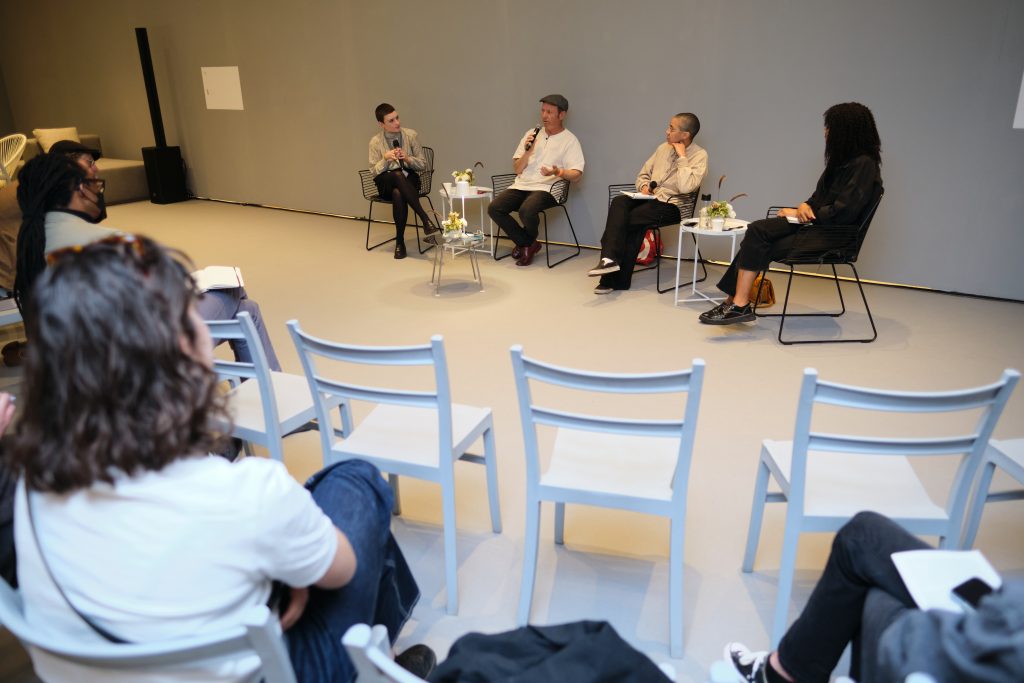
From left: Keely Shinners, Mario Pissarra, Thulile Gamedze, Nkgopoleng Moloi. Courtesy of FNB Art Joburg.
The next day, I am moderating a talk about art writers with Nkgopoleng Moloi, Thuli Gamedze and Mario Pissarra. They seem to share my sentiment that the job of the art writer is at once indefinitely challenging and infinitely life-giving. Challenging, because the money’s not great; the gigs can be soul-sucking, married as they are to the whims of the market; the audience is largely silent; the landscape of criticism is lacking in opportunities for meaningful research. Life-giving, because writing is a life-giving practice. It is a way to remember artists who the market has forgotten. It is a way to illuminate the power structures that inform all artworks. It is a practice of being moved and moving back. It is a practice of transcending time, or operating on multiple levels of time.
It feels even more life-giving now, here, together. It feels like we have each other’s backs, and this gives me some feeling of buoyancy as I acknowledge the handful of people who came to listen to us speak, as I confront the market that continues to dominate downstairs.
During the talk, Thuli said something that stuck with me. She was talking about a form of art writing that concerns not only the work, but how the work is framed – literally, how it is framed, who placed it on this wall and why, who paid for this wall, who built it?
I return to the fair with this in mind. The walls were up by the time I got here. I do not know who built them. This kind of labour – the labour of all the carpenters, construction workers, electricians, shippers, packers, hangers, gardeners, cooks and cleaners – is invisible here, as it often is in the art world. I was told that Irina Kubica is the architect designed these walls. Irina is the partner of Jonathan Garnham, director of blank projects. He is one of the few actors who gets to decide what goes up on the walls. When I think about this, I am reminded of a story I heard recently about this couple and walls: twenty years ago, Jonathan and Irina ran a nightclub in Berlin next door to the apartment where they lived. As they worked the bar late into the night and the early hours of the morning, the music blasting, they had to keep their ears on a baby monitor while their daughter slept on the other side of the wall.1This paragraph originally read: “Irina is the wife of Jonathan Garnham, director of blank projects. He is one of the few actors who gets to decide what goes up on the walls. When I think about this, I am reminded of a story I heard recently about this couple and walls: twenty years ago, Jonathan and Irina ran a nightclub in Berlin next door to the apartment where they lived. As they worked the bar late into the night and the early hours of the morning, they had to strain their ears to hear the sounds of their baby amidst the blasting techno should she be crying on the other side of the wall.” I changed it after I ran into the couple who said, “First of all, we would never play techno. Secondly, any parent knows you wouldn’t be able to hear a child crying on the other side of the wall. And thirdly, we’re not married!” I apologise – Irina, Jonathan, readers – for my gullibility!
Power structures being what they are in a place like this, Jonathan might be considered top of the food chain – the one who says, this is what goes on the wall. I’m sure he can hardly believe it. Are there days when he finds this position just as random and absurd as I do? I wonder if, when he takes his smoke break, he thinks, what am I doing here?
What are we doing here? I think, taking my smoke break. Smiling at each other, making jokes, taking pictures, selling our wares. Why are we here? We are here because of art. Art which is not just a product or a commodity – because if it was, we might as well have come here to sell useful, more lucrative things, like cars or computers. Instead, Jonathan is selling Ed Young’s arm, clenched into a fist, the thumb poking out between his index and middle finger as if to say, I got your nose. He’s selling Lerato Shadi’s woollen sheath, crocheted by hand to cocoon her body from head to toe. And then there are Sabelo Mlangeni’s small, hand-printed, black-and-white photographs that document precisely labours unremembered and unseen. In this case, they are women who cleaned the streets of Johannesburg’s CBD in the dark nights of 2006, their figures spectral in the long exposure between sweeps – as if this labour refuses documentary, refuses capture, refuses memory.
These pieces cannot just be products that exist to make the gallery and its directors more rich. There is something about them that is divine.
And here I’m not talking about aesthetic purity. (In our postmodern world? I wouldn’t dare!) I’m talking about the ‘art moment,’ which is a sort of wonderful, almost imperceptible buzz one feels sometimes when looking at an artwork. In a video essay recently uploaded to Youtube, CJ the X describes the ‘art moment’ not as the interaction between object and viewer but “the transmutation from the eternal to your heart through your subjective analogues to an object to someone else’s subjective analogues to their heart and back to the eternal.” I believe that this transmutation is occurring in this large room in this city of shopping centres. I feel it when I look at shafts of light passing through the tears in Sepideh Mehraban’s carpet. I feel it when I look at one of Sam Nhlengethwa’s lounges, its sofa wrinkled by a sitter I’d like to meet. I feel it when I look at Tzung Hui Lauren Lee’s works that hum with energy of subtle matter: dust, air particles, flits of ink, fibres of paper, grains of digital renderings. I feel it when I look at Inga Somdyala’s panels of canvas stained with clay and ochre, beautiful but with a sinister undertone, similar to viewing fields of monocrop from the air. I feel it when I look at Nelsa Guambe’s charming, bright eyed, red-lipped portraits of herself and her sister, staring back at me from a canvas made from sails washed ashore by the cyclone Dineo in February 2017 – a striking bid at new life.
I feel the transmutation most palpably in a work by Warren Maroon. It is a carpet that appears, at first, to be encrusted with small jewels. Upon closer inspection, the jewels turn out to be tiny shards of broken glass. The broken glass is brown, conjuring up images of beer bottles crushed in many drunken furies – some euphoric, other despairing. Simply executed, this work speaks volumes about violence – a quiet violence, the kind you don’t notice until it touches you and leaves you scarred, a violence that is, importantly, both fueled and numbed by alcohol.
I thought back to Maroon’s work often as the weekend progressed. There was a party at Bag Factory on Friday night and, on Saturday, a party at Stevenson in honour of FNB Art Prize winner Dada Khanyisa: we lingered in the garden drinking gin and tonics and warm champagne until the sky darkened. Then, it was on to Kalashnikovv, where the crowd damn near broke into riot because of how long it took to get a drink at the bar. Many scattered across the streets of Braamfontein and Newtown looking for another buzz. I think about how alcohol is fuel and fodder for art events like these. To what extent we are just having fun or kindling something violent is something we don’t talk about. Perhaps, as Maroon’s piece suggests, the unsavoury times we share around booze get swept under the rug, a faint glimmer in the larger tapestry of the industry.
At the fair on Sunday morning, everyone is cordial, but the underlying mood is grumpy, exhausted, hungover. I think about the sign outside the fairground that promises “3 days of the best in contemporary African art.” Yes, I think, they did get our best – the fair was well-organised, the exhibitors delivered, the people engaged. But maybe they got our worst too: our side eyes, our rolled eyes, our eyes glazed over. That’s why I love a job in art so much: the beauty finds a way to curb the ugliness; the ugliness finds a way to curb the beauty.
Come Sunday night, it is time to return the basement to its blank state. Again, there is the sound of power tools as screws are loosened, works wrapped in plastic, walls torn down. Outside, in the back lot, the skips are full of our detritus. I don’t mind the smell because it’s the first time in days I’ve felt the sun on my face; the sky is red and dry.


